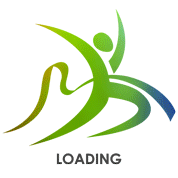
Copyright © 2021 - 2025
Sportsmatik.com. All Rights Reserved

Para-Judo is a Paralympic sport which is an adaptation of judo for visually impaired athletes because these athletes possess highly developed qualities like balance, tactical skill, strength, touch proprioception and combative instinct. The rules of para-judo are somewhat different from that of the regular judo matches. The main difference is that in para-judo, judokas have a loose grip on each other’s judo suits at the start and the playing mat has a different texture so that the athletes know where the boundary is. The sport was first introduced as a competitive sport at the Summer Paralympics in 1988 at the Seoul Games for men and in 2004 at Athens for women and is the only martial art in the Paralympics.
To beat the opponent by scoring maximum points with the points being scored for throws, holds and other legal techniques.
| Men's Division (Kg) | Women's Division (Kg) |
| -60 | -48 |
| -66 | -52 |
| -73 | -57 |
| -81 | -63 |
| -90 | -70 |
| -100 | +70 |
| +100 |
Two athletes of same weight category compete during a para-judo match.
The playing area of para-judo is same as that of judo. The only difference is that the mat has a different texture from that of judo which enables the para-judo athlete to know where the boundary is.
Stands in the contest area and judges the competition. In case a dispute arises, then the referee and two judges consult each other and come to a decision.
Two corner judges ensure that whole of the competition/match takes place inside the contest area.
Time the length of the competition and the holds.
Keeps a written record of the score and results of all the matches.

 Loading...
Loading...
Kindly log in to use this feature.
